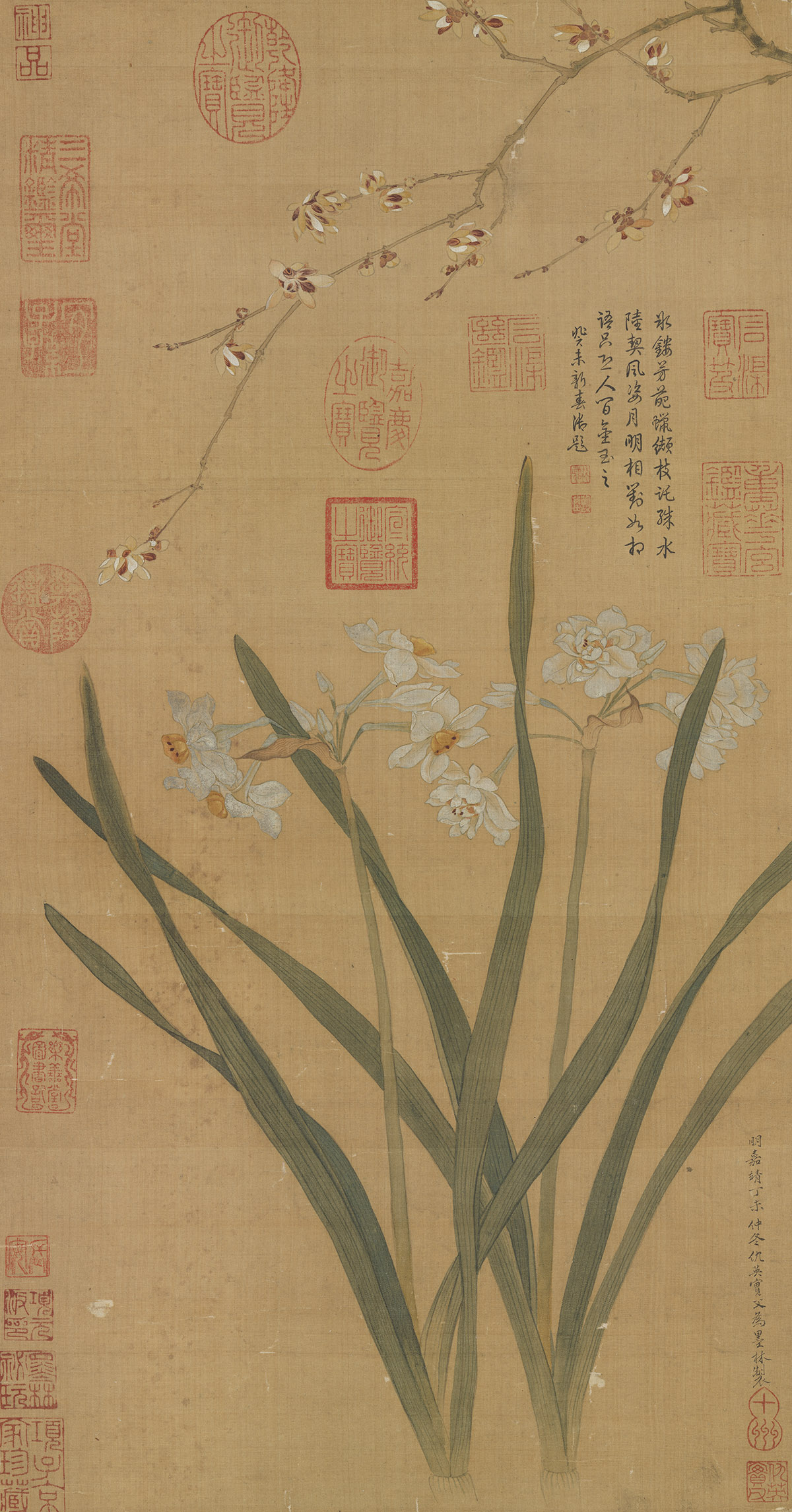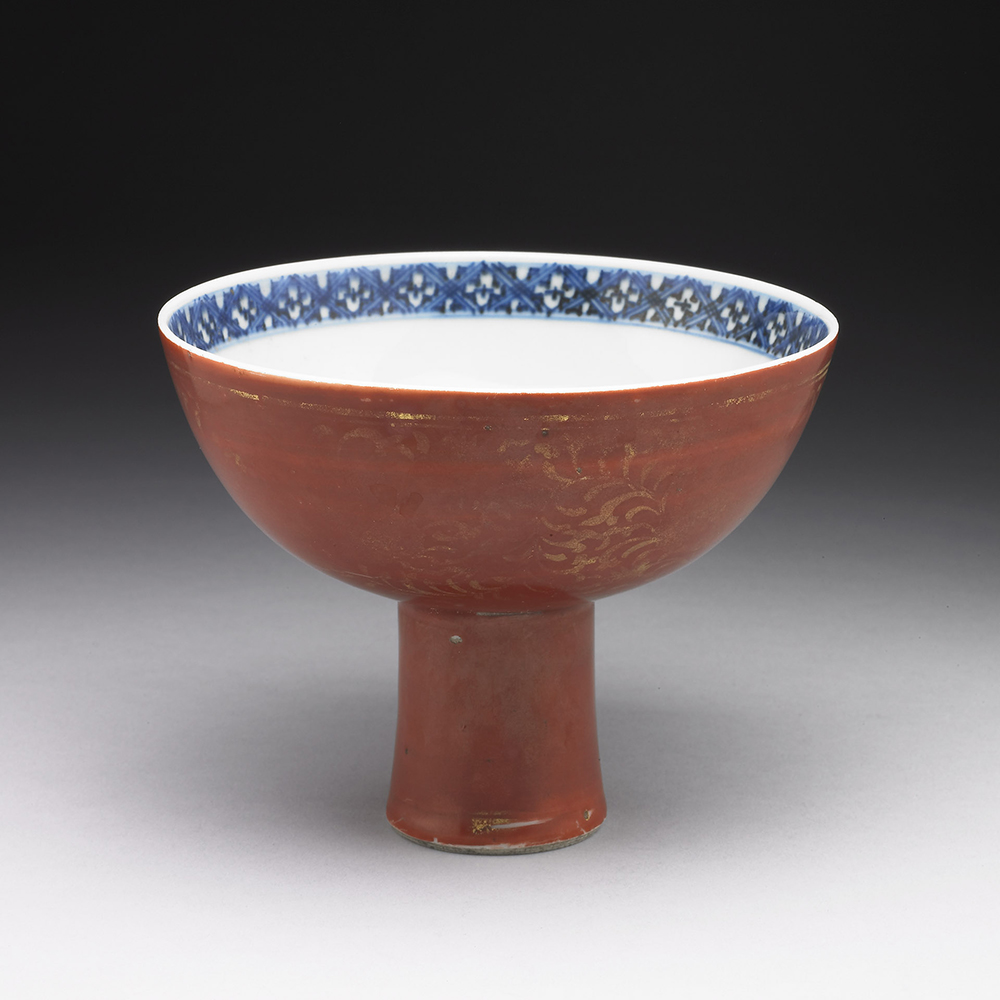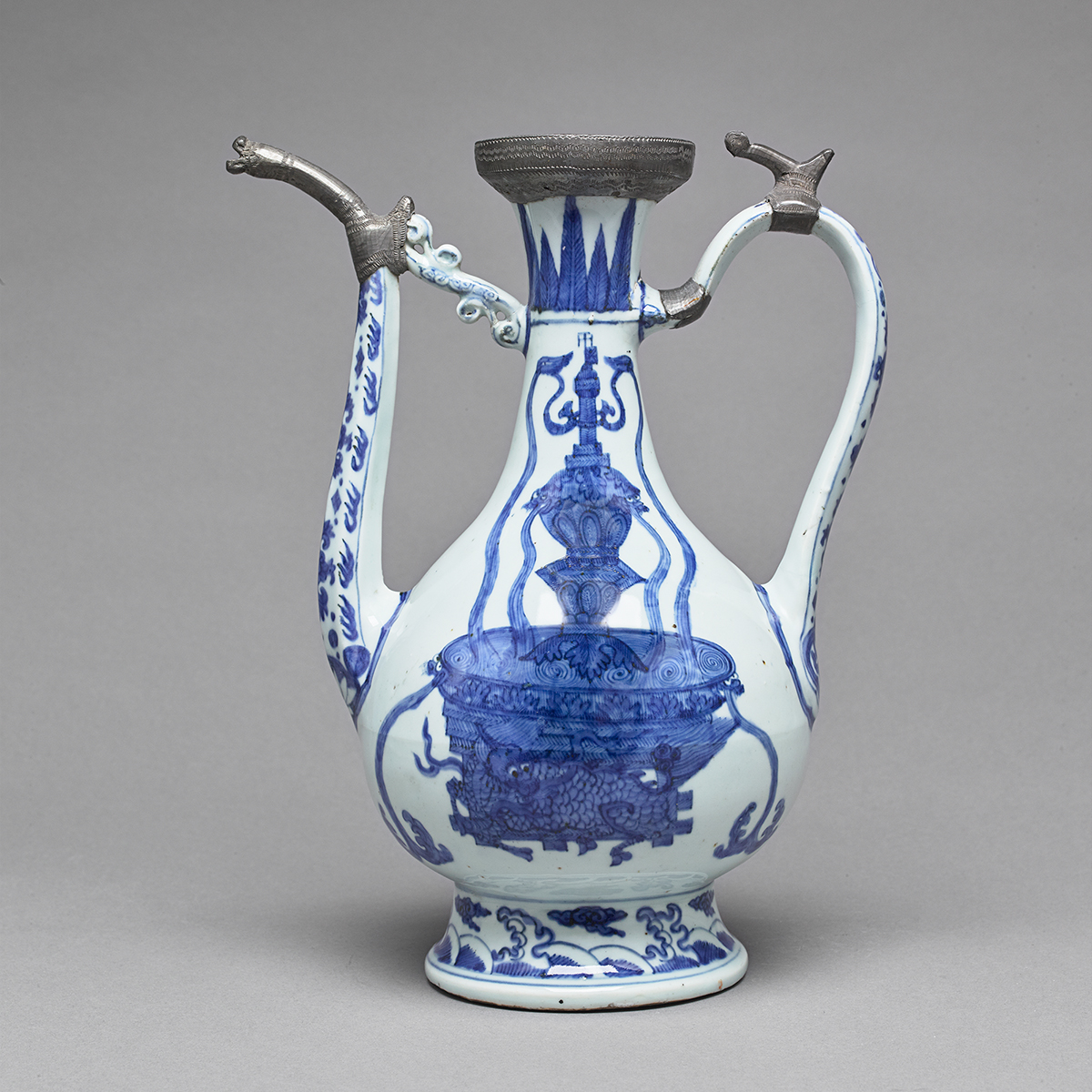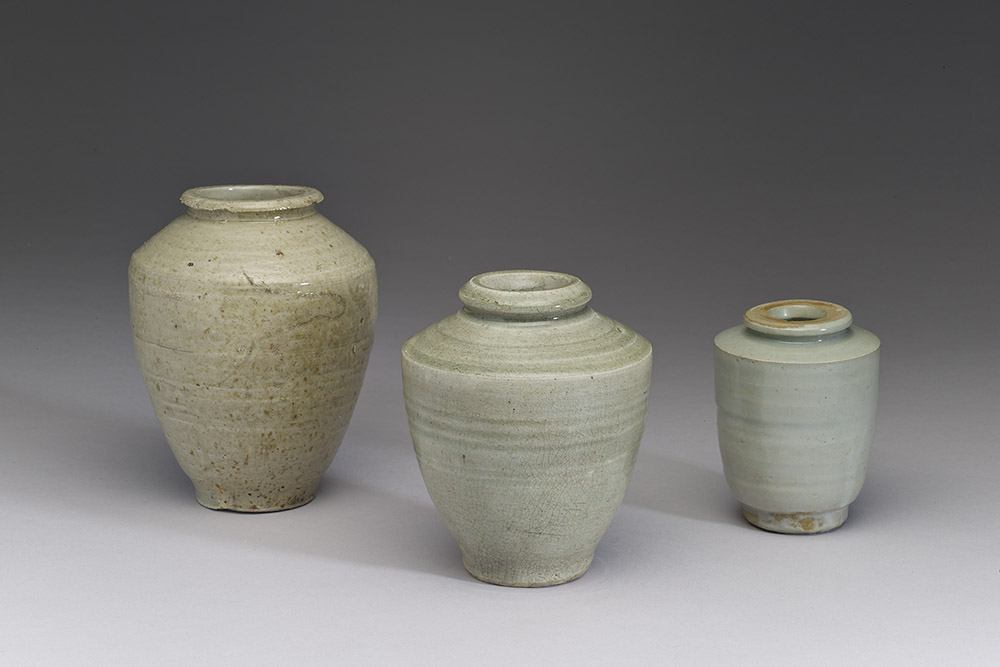The Chance Encounter
On the blue stage over the boundless sea and through expeditions from all corners of the world, the means for connecting and opportunities for chance meetings gradually materialized. From different departure points, people sailed into the known and unknown, and together, they have co-written legends and tales with deep resonance.
Since the second half of the 16th century, the tribute system and the sea ban policy of the Ming court had grown weak. While the monarchy continued its dominance, substantive changes already occurred among the people in the East Asian Seas. The merchant-pirates from Fujian and Zhejiang and the multi-ethnic “wokou,” pirates of Chinese and Japanese origins, emerged with powerful maritime force. Meanwhile, Europeans arrived in Asia by sailing around Africa to cross the Indian Ocean or crossing the Atlantic and Pacific Oceans. Their arrival sent a surge of diverse vitality into Asia. Quietly, export porcelains with exotic decoration and produce from the Americas changed what was everyday living around the world. Taiwan, right where we are, also started to shine on the stage at this moment in time.
- Narcissi and Chimonanthus | 16th Century
- Qiu Ying, Ming Dynasty
- Hanging Scroll
- Image Height 47.5cm, Width 25cm
- National Palace Museum Gu Hua 002191
Qiu Ying (fl. 1494-1552), style name Shifu, sobriquet Shizhou, was a native of Taicang, Jiangsu province and a painter famed for his landscape, figure, animal, flower and ruled-line paintings. Ingeniously juxtaposed is a branch of chimonanthus extending gracefully above a pair of narcissi amid the frigid winter. While alluding to virtuous gentlemen, the flowers are also embedded with seasonal greetings. Depicted with precision, elegance and a refreshing air, the composition, outline and coloring techniques show influence of the Southern Song dynasty court paintings such as Ma Lin’s Layered Ice Silk, which deviates noticeably from the literati paintings. Qiu’s intricate style is exuberant yet classically elegant, exact yet refined, making him the most famed professional painter in Suzhou during the 16th century. The market was inundated with forgeries of his paintings, reflecting his popularity as well as the local taste in art.
Despite his popularity, there is no evidence suggesting that the Japanese emissaries were ever avid collectors of Qiu’s work, perhaps due to his being labeled as professional rather than literati in terms of identity and style. It was not until the beginning of the 17th century with the influx of forged paintings claiming to be the collaborative work of Qiu Ying and Wen Zhengming (1470-1559) that his position in art history finally shifted.
- Stem Bowl in Underglaze Blue with Gold Floral Motif in Red Ground | 16th Century
- Height 10.2cm, Diameter (Rim) 13.1cm, Diameter (Foot) 4.1cm
- National Palace Museum Gu Ci 002810
The interior and exterior of the stem bowl are adorned with two different glazes. As shown in the photo, the interior features a band of diamond-shaped motifs filled with crosses in underglaze blue underneath the rim. In the center of the stem bowl, a bird rests on stemmed branches enveloped by two concentric circles. The exterior is decorated with alum red ground with gold-foiled lotus motifs. The red sets off the lavish gold, like a golden brocade. Hence after the 19th century, this style gradually adopted the name “Kinrande (gold brocade)” from the Japanese scholars and achieved global recognition.
For this special exhibition, the National Palace Museum has displayed one of the only two such specimens to match their counterparts from the Topkapi Palace Museum in Turkey and explain how they were introduced to the Islamic court in the 16th century. As shown on one of the surviving Kinrande porcelain bowl, a silver base was mounted with inscriptions added, documenting the purchase of this porcelain in 1583 by the royal House of Manderscheid-Blankenheim in Germany. The owner later gifted the piece to an elder brother as a show of respect. Considering that the original owner once made a pilgrimage to Jerusalem in 1582, and that the Middle East was a bridge between China and Europe in the 16th century, this type of porcelains could represent Chinese porcelains exported to Europe through the Middle East.
Meanwhile, Kinrande porcelains are also among the objects recovered from the Portuguese Espadarte (1558) and the Spanish San Felipe (1596) shipwrecks. The discovery can be compared against the Kinrande pieces found in Portugal and Spain to explain the global export of Kinrande as maritime routes expanded.
- The “Magic Fountain” Ewer in Underglaze Blue | 1522-1566
- Jiajing Reign, Ming Dynasty
- Height 31.2cm, Diameter (Belly) 16.7cm
- Guimet National Museum of Asian Arts
As illustrated, the ewer in underglaze blue is decorated with the fountain motif known as the “magic fountain.” Such ewers are rarely found and most of them lack reign marks. However, one of the ewers in the collection from Singapore is inscribed with Da Ming Jiajing Nian Zhi (Made in the Jiajing reign of the Ming dynasty), which scholars have used as evidence to date the “magic fountain” ewers to the 16th century. The author also considers the pear-shaped body and long hexagonal spout on the displayed ewer, which are shared by another ewer bearing the coat of arms of the Portuguese family of Peixoto as well as the mark of the Jiajing reign, to be viable sources of dating the “magic fountain” ewer.
Initially, scholars were intrigued by the foreign origin of the fountain motif. However, despite discussions spanning different generations, a consensus has not been reached to this date regarding whether the maker copied an actual image or relied solely on verbal descriptions to create the pattern. As shown on the vase, the three-layered structure towering over the basin is indubitably where the water valves reside. The water flows out of the animal mask decorations on the top and middle layers as well as both sides of the basin with a qilin crouching underneath. Such a unique design has inspired a multitude of research from diverse perspectives over the years that rendered three interesting explanations. The first attributes the origin of the “magic fountain” to the time of Ogedei Khan during the Yuan dynasty, during which foreign metalsmiths built the magic fountain in Karakorum, Mongolia. The second deems the 16th century Renaissance as the source of this motif. The third connects the motif to the international trade during the Age of Discovery, where the Western motifs introduced to China through missionaries. This allowed the Chinese ceramicist the opportunity to blend the Chinese traditional dragon and phoenix patterns with the new elements, resulting a unique style that reflected the fusion of the East and West.
- Anping Jar | 17th Century
- Height 16.6 cm/Height 14.5 cm/Height 11.3 cm
National Palace Museum Zeng Ci 000531, 000532, 000534
It is puzzling how a ceramic jar named after a city in Taiwan cemented itself in the history of Chinese ceramics. Anping Jar is a rare example, and a notable one. Named after Anping, Tainan, it is where considerable numbers of Anping Jars were excavated. Though categorized under a common term, they vary in size, glaze and thickness, likely the work of multiple kilns. The latest archaeological excavation and research indicate the production of Anping Jar in the Shaowu and Gaofutou kilns in Fujian province, China.
- Height 16.6 cm/Height 14.5 cm/Height 11.3 cm
Excavation sites of Anping Jars are often accompanied by the 17th century settlements of the Spanish, Dutch and Zheng clan. The jars were used as containers for trading goods bound for Taiwan. The Anping Jars recovered from the General No. 1 shipwreck in the Penghu Sea and those from the collection of the National Museum of Taiwan History still have shells attached. They help provide a piece of the puzzle of goods being marine shipped to Taiwan. Though the jars are now empty, they might have carried liquor, gun powder and tea across the sea according to research. In particular, remnants of ropes around the opening of Anping Jars excavated from the Kiwulan site in Yilan indicate the need for sealing the jars.







